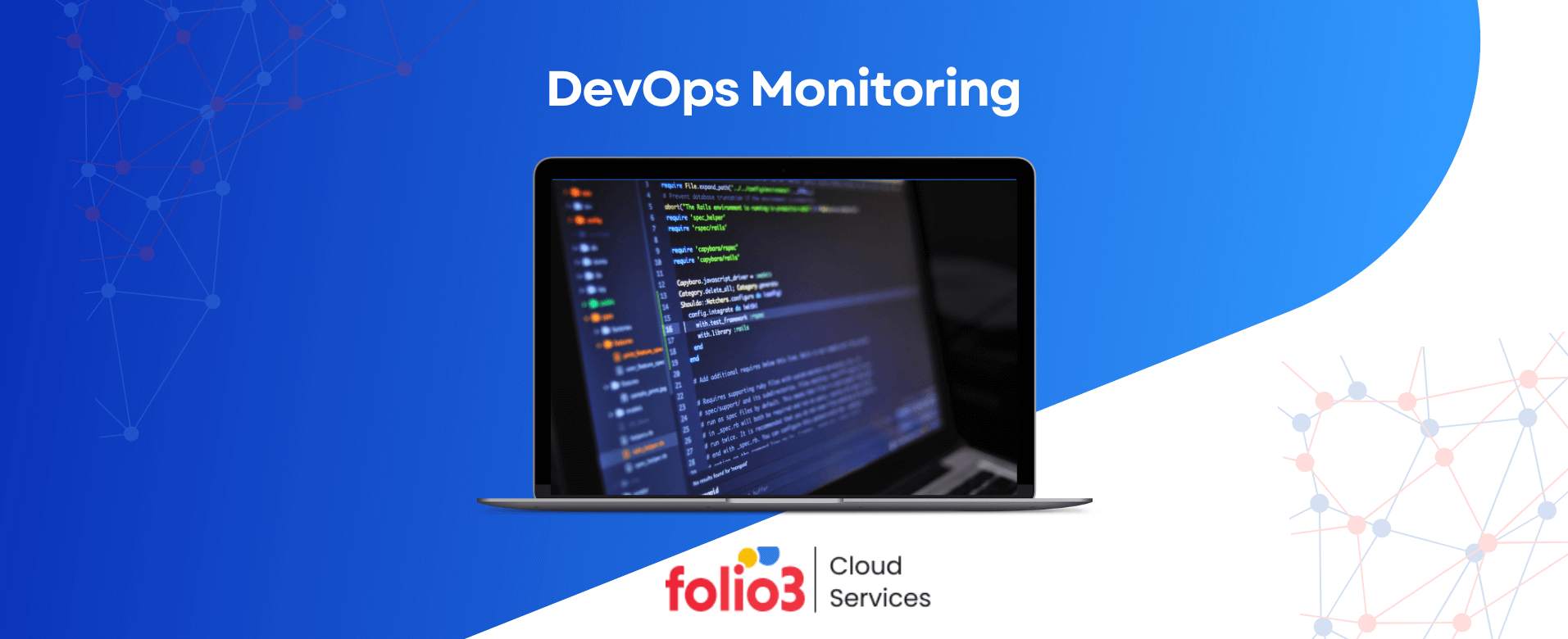Is an invention that is responsible for embedding security checks throughout the development operations possible? This was once considered an afterthought. But DevSecOps has changed that! Now, every organization, big or small, is looking for what is DevSecOps, and how they can get their hands on it.
What Does DevSecOps Stand For?
DevSecOps is an abbreviation for development, security, and operations. In other words, it is a merge of three technical terms. It highlights the need for security integration into the DevOps process.
DevSecOps represents a transformative shift in software development. Whether it’s about security or operational management, the rapidly growing concept in software development has become a need of the hour.
By adopting a DevSecOps approach, organizations can achieve numerous benefits. From superior code quality to accelerated delivery times to early risk detection, DevSecOps offers them all.
The sole reason it came into being was to reduce vulnerabilities and ensure robust applications. Before understanding how it can help organizations, we need to first comprehend what is DevSecOps.
What Is DevSecOps?
DevSecOps is an industry-wide cultural shift in software development. It aims to strengthen security in the software development life cycle from the very beginning.
When talking about this method to secure the software development process, the question of what is DevSecOps methodology and how it can help an organization comes up. To answer that question, we need to understand the basic principles of DevSecOps.
They involve integrating security practices from the design phase rather than keeping them for later use. That also ensures a comprehensive and proactive approach to software security.
The core of DevSecOps is recognizing that every team involved in the software development process is responsible for security. This approach emphasizes the shared responsibility for maintaining security throughout the development lifecycle—an act that encourages developers, operations teams, and security teams to work collectively.
The most significant benefit of embedding security in the initial stages of development is that it reduces the risk of security issues. Especially the ones that appear late in the development cycle. This leads to safer, more secure software and faster, more efficient deployment.
The simple answer to what is DevSecOps would be that it represents a robust and proactive strategy. Utilizing automation tools confirms that security measures are integrated throughout the software development.
Why Is DevSecOps Important?
Now that you have a basic idea of what is DevSecOps, it is time to shed light on its significance. As stated, it incorporates security into the DevOps process, leading to a secure and efficient software development lifecycle.
Now, the point is, why is DevSecOps so important? Here’s the answer. Security and data breach risks exist in software operation development. It helps to reduce the risk of security breaches in the design and operation of software. The integration at every step eliminates vulnerabilities early, reducing costs and delays.
Secondly, DevSecOps also enhances compliance. It automates compliance policies, making the commitment more manageable. This also reduces the risk of human error. The approach fosters cooperation, transparency, and shared responsibility among teams.
Additionally, DevSecOps encourages faster delivery times. Resolving security issues during development can prevent the expensive and time-consuming process of resolving them later. Exactly what accelerates time-to-market and promotes business power.
Today, when cyber threats are increasing day by day. Taking DevSecOps services has turned into a necessity instead of a luxury. The way it aligns security, development, and operations teams together helps a lot as it makes secure software development efficient and scalable.
In short, DevSecOps is a foundation of successful software engineering in today’s digital age.

Your trusted devsecops services partners
Securing Your DevOps Journey with Proven Expertise and Trustworthy Partnership.
What Are the Benefits of DevSecOps?
Here is the list of four significant benefits of DevSecOps you must know after understanding DevSecOps definition.
1) Faster Delivery
One of the most significant advantages is that DevSecOps speeds up the release cycles. They integrate security testing directly into the continuous integration/continuous deployment (CI/CD) pipeline.
It aims to identify any security-related issues early in the development stage. The same goes for rectifying them because going the other way has its consequences.
However, the invention results in fewer delays, faster fixes, and expedited delivery times. All of these are essential in today’s fast-paced technology times.
With shorter release cycles, businesses get the leverage to respond to market demands more quickly. This helps them stay ahead of their competition.
2) Improved Product Quality
If anything that affects the product quality, it is the late detection of weak points. DevSecOps does not only detect them early but also helps overcome the vulnerabilities.
In other words, it also reduces the need for rework. This process improves the code’s efficiency, directly impacting the product’s excellence and reliability.
On top of that, it enhances user trust as they can rely on a product that is built considering security factors. With a more secure and reliable product, businesses can avoid costly security breaches and retain their reputation.
The continuous implementation of DevSecOps in software development processes has changed the game. This results in a secure product that performs better and is less prone to failure.
3) Reduced Costs
As stated above, the integration minimizes security breaches. This also brings significant long-term cost savings. “Shifting security left” supports identifying and fixing issues early on.
Hence, it leads to the removal of hefty costs. The cost of dealing with disastrous security breaches appears later in the product lifecycle.
Moreover, it eliminates the need for costly post-release security fixes. Also, it reduces downtime due to vulnerabilities. DevSecOps helps businesses save time and money while ensuring a more secure product.
On the other hand, the traditional software development model treats security as an afterthought. This results in significant costs regarding time, resources, and reputation.
4) Increased Innovation
Another edge DevSecOps brings is that a secure base promotes developer confidence. Thus, it fosters creativity and innovation. Confident developers in the security framework afforded by DevSecOps innovate faster and deliver cutting-edge DevSecOps solutions. All that delights users and improves the organization’s competitive advantage.
The streamlined process and collaborative environment of DevSecOps empower developers to focus more on positive aspects instead of worrying about potential vulnerabilities.
Organizations can deliver more value to their customers and stay ahead of the curve in an ever-evolving market. By promoting a secure environment, developers can focus on creating new and innovative solutions without hesitation.
In other words, they end up with faster development timelines and increased customer satisfaction.
How Does DevSecOps Work?
A vital approach in the world of software development called DevSecOps centers on three main principles. The first is collaboration, when everyone is involved. Developers and security teams work together to bring about better outcomes.
The second principle is automation. Not only does automation fast-track tasks, but it also reduces the chances of errors. For example, they have automated security checks. These checks take place during the coding phase. They have to detect the vulnerabilities as soon as possible.
Lastly, there’s an approach of continuous feedback. It’s an ongoing cycle because the feedback from each stage is crucial. It helps to improve the next phase of the process.
Let us understand it by an example. Imagine a construction site considering safety checks only at the end. The issue here is clear. Any problems found would require considerable rework.
Now, compare the outcomes while having DevSecOps as a safety officer on-site. The instant checking and immediate feedback lead to immediate corrections.
In software terms, the ‘construction’ is the coding process. Meanwhile, the ‘safety officer’ is the security tools and practices in place. DevSecOps is about automated processes, team effort, and ongoing feedback. It’s a process where security is a sustained focus. After all, the goal is to produce safer, higher-quality software.
Best Practices for DevSecOps
DevSecOps, the practice of integrating security into the DevOps lifecycle, holds immense value in software development. The correct implementation can significantly enhance the security posture of applications.
Besides, minimize security risks and accelerate delivery by the following practices.
1) Automate Security Testing
One of the excellent practices for DevSecOps is the automation of security testing. Teams in this practice can identify and rectify vulnerabilities earlier. They integrate automated security tests into the continuous integration/continuous delivery (CI/CD) pipeline.
Through this approach, they can do wonders. This improves security and also promotes efficiency. It also reduces the time and resources required for manual testing.
Therefore, automated security testing has proved to be a vital component of DevSecOps.
2) Promote Transparency and Communication
Another essential practice in DevSecOps is promoting open communication and transparency. It solves many issues in an environment where developers, security experts, and operations teams work together.
This culture of cooperation not only aligns goals but also streamlines processes. Apart from that, it facilitates quicker issue resolution. It also encourages a sense of shared responsibility among team members, so everyone actively contributes to sustaining and upholding security standards.
Ultimately, such DevSecOps best practices create a stronger and more resilient foundation for development.
3) Focus on Continuous Improvements
Continuous improvement is the foundational stone of a sound DevSecOps strategy. There is no denying that mistakes are inevitable in any process. However, what matters are the lessons learned from those mistakes. Initially, the teams should identify the errors. Then comes the turn of learning from these errors.
They should gradually utilize the insights gained to refine the DevSecOps process. These activities result in resilience, adaptability, and a commitment to excellence. It also confirms that security standards are constantly evolving and improving before it’s too late.

YOUR TRUSTED DEVSECOPS SERVICES PARTNERS
Building a Safer Tomorrow: Your DevSecOps Journey Starts Here
What Are Standard DevSecOps Tools?
To secure the delivery of software, a number of DevSecOps tools are required. The collaboration of these tools facilitates continuous integration, development, and deployment while maintaining stringent security protocols. Some of the standard tools are:
1) Code Analysis Tools
Using code analysis tools is crucial in the DevSecOps approach. They scrutinize source code to identify potential vulnerabilities. In addition to that, to identify coding errors that attackers could exploit.
Some of the tools offer static code analysis. This helps developers to identify and rectify security issues early in the development cycle.
Continuous integration (CI) and continuous delivery (CD) are the core pillars of the DevSecOps methodology. Since each component fulfills a distinct role, it seamlessly integrates with code analysis tools.
However, it demands expertise to incorporate code analysis tools for CICD integration.
2) Security Scanners
Another mandatory component of a robust DevSecOps strategy is security scanners. Their job is to scan applications and infrastructure for vulnerabilities.
Particularly the ones that might have been neglected during development. Or the ones that appear over time. Thus, give a security check before they’re deployed to production.
These security scanners easily merge with IaC. Eventually, it bolsters the security aspect of DevSecOps. The scanners can also be set to scan the IaC codes to figure out any misconfigurations that could lead to security threats.
By doing so, these scanners make sure that the execution and management of infrastructure are securely compliant. Irrespective of how difficult the challenge is. The relevant experts can handle them. Or else, what is a DevSecOps engineer for?
3) Configuration Management Tools
Configuration tools also majorly contribute to maintaining system security. Forming consistent configurations across environments reduces the risk of misconfigurations.
Lack of this could lead to security lapses. On the other hand, these tools also free up valuable time for developers by automating this process. This is what enables them to focus on more strategic tasks.
They detect changes in configurations that could result in incidents. The tools generate alerts for configuration drift or compliance violations. The key is the smooth interaction of monitoring and alerting tools with configuration management.
It fortifies the DevSecOps strategy. It also emphasizes the importance of preventative and responsive measures in maintaining system integrity.
Challenges of Implementing DevSecOps
DevSecOps introduces notable changes to the traditional development and operations model. Therefore, it has to face numerous challenges quite often. Here are some basics.
1) Cultural Change
The first major hurdle is cultural change. The DevSecOps refers to a radical shift from the compartmentalized mindset of ‘development-operations-security’ to an integrated and collaborative ‘DevSecOps’ approach.
This raises concerns to convince all the team members of the importance of security. It is based on breaking down silos and encouraging cross-functional collaboration. This could be challenging in organizations where a siloed culture is deeply ingrained.
2) Skills and Training
The skills and training required for DevSecOps are another considerable challenge. It demands a workforce that possesses some traits. For instance, they should not only be able to work on development and operations skills. But also have a sound understanding of security principles.
Equipping teams with these diverse skills often requires extensive training. These hiring practices can be time-consuming and costly as well.
To streamline hiring for such specialized roles, HR teams often rely on tools for assessing candidates and tracking technical competencies through platforms like Recruit CRM, ensuring that the right balance of development, security, and operations expertise is achieved without lengthy manual evaluations.
3) Tool Integration
Additionally, integrating the right tools into existing workflows is a complex task. DevSecOps necessitates the use of a wide range of tools for such tasks. They involve continuous integration, automated testing, deployment, and security scanning.
Selecting suitable tools that align with an organization’s unique needs requires effort. Plus, integrating them into the workflow can be a daunting task.
4) Metrics and Measurement
Lastly, a critical challenge is defining and tracking relevant DevSecOps metrics to measure progress and ROI. Unlike traditional development metrics, DevSecOps metrics work on security detection and the time taken to resolve security issues.
Establishing and consistently tracking these metrics requires a robust monitoring and reporting mechanism. They are ultimately making it a challenging aspect of progressing with DevSecOps.
Case Studies
Growth. Enabled.

Sunburst Type To Learn

InGenius Prep

Magento Cloud Migration

Nutrition Detection App
Conclusion
The ultimate goal of DevSecOps is to enhance the speed of software releases while ensuring safe code in production. And what better way to do it than to hire a DevSecOps expert for consultation?
In fact, many companies have already started hiring DevSecOps experts to join their software development teams, especially for this purpose.
With the increasing number of cyber-attacks and data breaches, it is high time to ensure the security of software development life cycle. This is where DevSecOps comes into play, as it integrates security practices and measures into the development process itself.
For any organization wishing to stay competitive, exploring what is DevSecOps is the first step. Then, implementing DevSecOps is highly recommended.
- Frequently Asked Questions
Q1. What Is the Difference Between DevOps and DevSecOps?
DevOps is a practice that focuses on the collaboration between software developers (Dev) and IT operations (Ops). The goal here is to deliver software faster and more efficiently. Meanwhile, DevSecOps incorporates Security (Sec) into the DevOps approach.
Q2. Is DevSecOps Cybersecurity?
In cybersecurity, DevSecOps integrates security practices within the DevOps process. The purpose is to make everyone accountable for security in a process aiming to implement security decisions and actions simultaneously.
Q3. What Is the Primary Goal of DevSecOps?
The primary goal of DevSecOps is to ensure the security checks from the onset of the process. This means that security is embedded in every DevOps workflow aspect, from planning and development to deployment and monitoring.

























